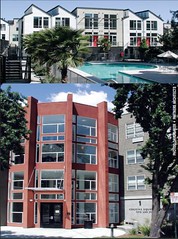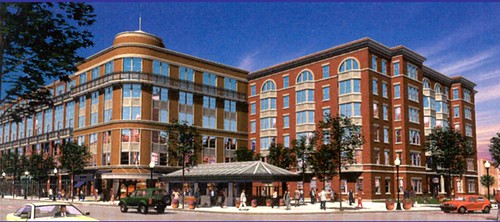Washington Post misses the point on inclusionary zoning

Posted July 28, 2010 at 1:35PM
Earlier this week, The Washington Post featured an article by Jeffrey O’Connell headlined, “DC affordable housing policy has put up a goose egg.” The article casts a pall over the city’s new inclusionary zoning program, citing a city report to the effect that the law had created no new affordable homes in Washington between last August, when it went into effect, and March of this year.
A little quick to judge a policy designed to produce long-range effects, don’t you think, six months during a recession? The city’s Department of Housing and Community Development summarizes the policy’s requirements and objectives:
“Inclusionary Zoning requires that a certain percentage of units in a new development or a substantial rehabilitation that expands an existing building set aside affordable units in exchange for a bonus density. The goals of the program are to create mixed income neighborhoods; produce affordable housing for a diverse labor force; seek equitable growth of new residents; and increase homeownership opportunities for low and moderate income levels.”
If one stays with the Post story, one eventually comes to the more promising facts: development proposals requesting zoning approvals for 4800 homes have been submitted to the city. If those projects are approved and built, at least 430 new affordable homes (offered at below-market rents to qualifying applicants) will be included as part of the projects under inclusionary zoning. Further, building permits have already been sought for another 92 homes, eleven of which will be affordable because of the new policy.
In other words, while the recession has dampened homebuilding since the rules took effect, over 400 affordable homes are in planning because of inclusionary zoning, representing nine percent of the new units coming on line. So which is the real story here?
No one has argued that inclusionary zoning is a panacea for assuring access to housing for working families and other low- to moderate-income households. As a market-dependent strategy, its impacts will be greater when more homes are being built. But it is a valuable tool, according to the Center for Housing Policy and National Housing Conference. One of its benefits is to help counter displacement of current residents as a result of market-driven redevelopment:
“Communities adopt inclusionary zoning policies primarily to increase new housing opportunities for moderate-income families. However, inclusionary zoning can also help stem displacement of existing residents in neighborhoods undergoing redevelopment, where the cost of housing increases to levels that are unaffordable to current residents. In addition to increasing the overall supply of affordable homes, inclusionary zoning can play a role in alleviating the "spatial mismatch" that occurs in many high-cost areas when local housing prices rise out of reach of low-wage workers who serve the community.
By ensuring that a portion of newly created homes are affordable to working families, inclusionary policies allow workers to access opportunity- and amenity-rich neighborhoods and avoid long commutes from areas with lower housing costs. During a slowdown in local housing development, inclusionary zoning can help to ensure that affordable homes will continue to be a part of the local housing landscape when market-rate development resumes.”
Inclusionary zoning policies are in effect in a range of communities across the nation, including Boston, Denver, San Francisco, Boulder, Santa Fe, Burlington, Vermont, and Montgomery County, Maryland northwest of DC, among others.
When the policy was being considered for DC, the building industry argued that it would dampen housing availability in the city, but research on San Francisco’s and Boston’s inclusionary ordinances found no impact on the amount of overall housing production in San Francisco during either strong or weak market periods; the research found only modest impacts in suburban Boston during periods of rising housing prices, and no impact during declining housing markets.  The researchers caution that the effects of other non-zoning market factors such as changes in population size, income, or costs of labor and building materials are likely to be significantly greater than the impacts of inclusionary zoning.
The researchers caution that the effects of other non-zoning market factors such as changes in population size, income, or costs of labor and building materials are likely to be significantly greater than the impacts of inclusionary zoning.
Ultimately, inclusionary zoning is not just about units or prices of housing but also the quality of life for working families. From a study by the Brookings Institution:
“Inclusionary zoning creates affordable housing units without isolating poor and working families into economically segregated communities. These ordinances institutionalize something that middle- and upper-income homebuyers take for granted: housing is not just about sturdy walls and a sound roof, but also about neighborhoods and opportunities.
“Linking affordable housing to market-rate, private development, inclusionary zoning increases the chance that low- and moderate-income families will live in healthy communities that appeal to people with resources and choice. Beneficiaries of these ordinances include not only minimum-wage workers, but also teachers, police officers, and service workers – productive citizens who form the foundation of any community.”
DC deserves no less.
The Brookings study also includes an excellent set of recommendations for how to maximize the potential of inclusionary policies.
Move your cursor over the images for credit information.
